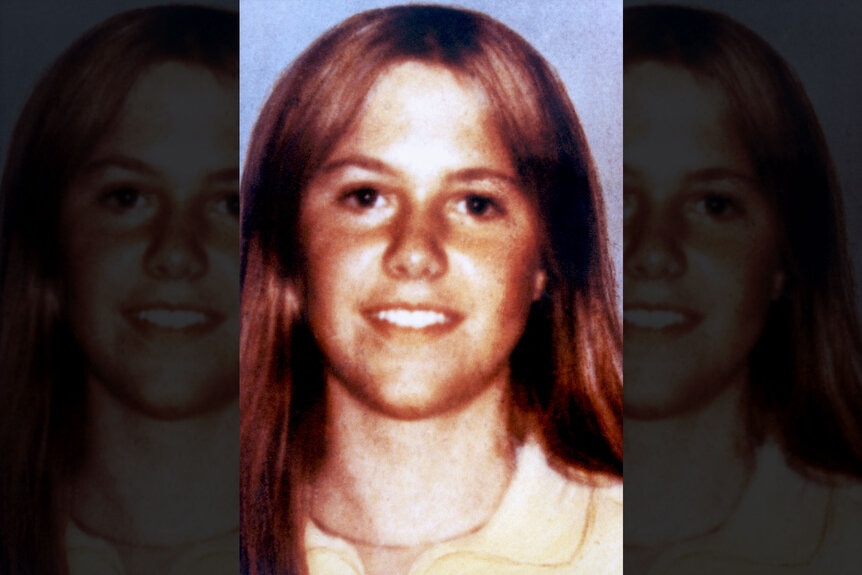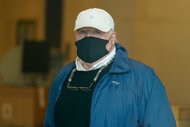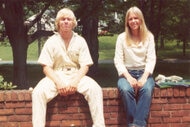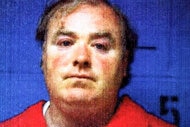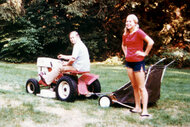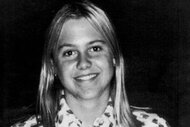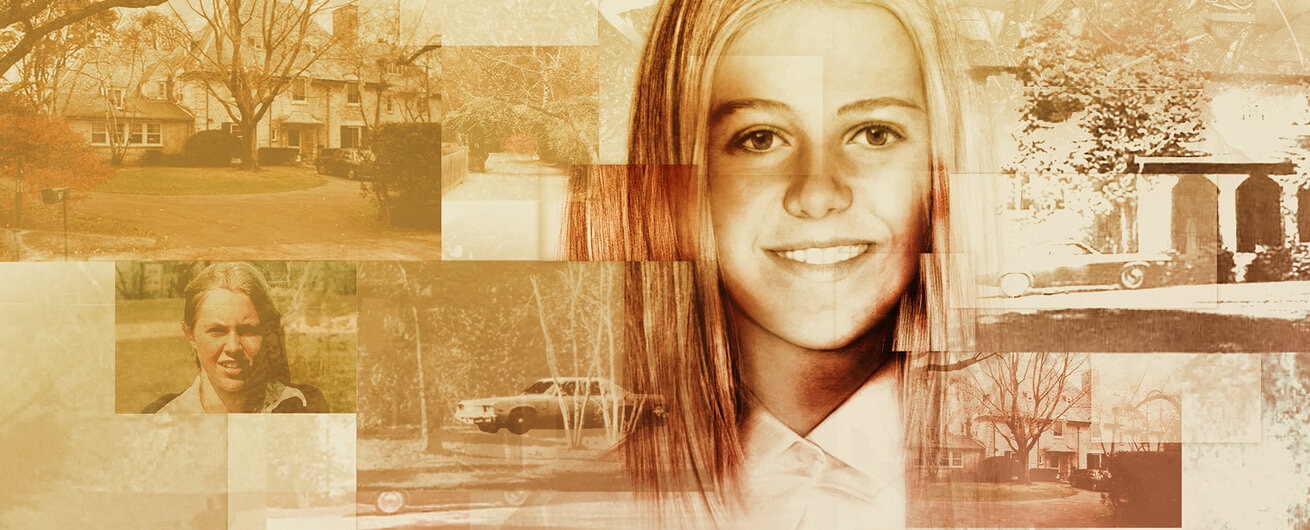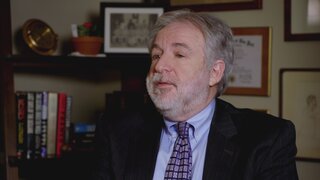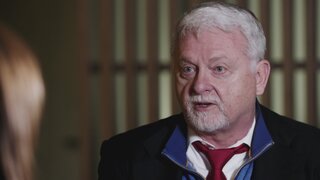Create a free profile to get unlimited access to exclusive videos, breaking news, sweepstakes, and more!
The Murder Of Martha Moxley: A Timeline
The 15-year-old girl was found beaten and stabbed in the backyard of her family’s Greenwich, Connecticut, home in 1975.
It’s been more than four decades since 15-year-old Martha Moxley was found dead, beaten and stabbed to death by a golf club in the backyard of her family’s Greenwich, Connecticut, home, and it’s still unclear what happened to the young woman.
No suspect was arrested right away — it took decades, until the early 2000s, for anyone to be convicted of her murder. But though her neighbor at the time of her death Michael Skakel was arrested, tried, and found guilty of her murder, a series of appeals resulted in Skakel’s conviction being overturned.
To this day, the murder of Martha Moxley remains unsolved, and her mother, Dorthy Moxley, continues to fight for justice, contending in 2018 that there was “no doubt” Skakel killed her daughter, reported The New York Times. Skakel, meanwhile, maintains his innocence.
It’s a case with many different twists and turns, one that spans decades. Here’s a breakdown of the confusing case:
October 30, 1975
Martha Moxley, 15, does not return after an evening out with friends in her Greenwich neighborhood. Her last stop was at the home of her neighbors, Michael Skakel, also 15, and his older brother, Thomas, 17. The two are nephews of Ethel Skakel, who was married to Senator Robert F. Kennedy.
October 31, 1975
Martha’s body is found partly concealed by pine trees in her backyard, beaten and stabbed. A broken golf club found nearby is believed to have been used in the murder. The club had apparently been shattered in the attack. Tommy Skakel is questioned by police, reported CNN.
1976 - 1977
Police trace the golf club to a set from the Skakel family, reported The New York Times. Tommy, and the Skakels’ live-in tutor Kenneth Littleton are interviewed and given lie detector tests. Tommy passes, while police note that Littleton “was not truthful in answering the key questions," according to the Hartford Courant. Neither are charged in connection with the case.
1978 - 1980
Michael is charged with drunken driving, reported CNN. The Skakel family works out a deal with police so Michael can avoid prosecution. Michael attends the Elan School in Poland Spring, Maine, which treats children with substance abuse problems. He was enrolled for two years, and classmate Gregory Coleman claims that Michael said in a group therapy session he killed Martha, according to The New York Times. The institute’s owner, Joe Ricci, denies Michael ever made the confession.
1991
The murder investigation is reopened, reported The Hartford Courant, following a rumor that William Kennedy Smith was at the Skakel home the night of October 30, 1975. The report was later discredited, but interest in the case was reignited.
1993
Writer and investigative journalist Dominick Dunne publishes “A Season in Purgatory,” a novel inspired by the murder of Martha Moxley. The plot revolves around the killing of a Connecticut teenager named Winifred Utley, who was bludgeoned to death with a softball bat. Her neighbors, the Bradley family, are wealthy and politically well-connected. The son of patriarch Gerald Bradley is ultimately accused of the crime.
1994
Michael works as an aide to Senator Edward Kennedy’s re-election campaign.
1995
A report is leaked to press: The Skakel family had hired private investigators, who re-interviewed Tommy and Michael. According to Len Levitt, the author of “Conviction: Solving the Moxley Murder,” Tommy admitted in that interview he lied to police in 1975. He previously claimed he had last seen Martha at 9:30 p.m. the evening she was murdered. He now claimed the two engaged in mutual masturbation outside his home, and she left just before 10:00 p.m. Michael also reportedly changed his story in this interview. He allegedly told the investigator that instead of going to bed after returning from his cousin Jimmy Terrien’s home at 11:00 p.m., he climbed a tree outside Martha’s window around midnight and masturbated.
1998
Former LAPD homicide detective and expert investigator Mark Fuhrman publishes “Murder in Greenwich: Who Killed Martha Moxley?” that points to Michael as the possible killer. “Greentown: Murder and Mystery in Greenwich, America's Wealthiest Community” by Timothy Dumas is also published.
June - August 1998
An investigator and one-man grand jury — served by superior court Judge George N. Thim — are appointed to review information in the Martha Moxley case. According to CBS News, though rare, a prosecutor can request a one-man grand jury following the failures of other investigative practices. Former suspect Littleton testifies in exchange for immunity. According to The New York Times, the investigation began to focus on Michael and Tommy, who deny any connection to the slaying. Mildred Ix, a family friend of the Skakels and neighbor of the Moxleys, speaks to the grand jury. She claims her daughter, Helen, who was also 15 at the time, had been hanging out with Martha, Tommy, and Michael the night Martha was murdered.
September 1998
Elan School owner Joe Ricci declines to testify before the grand jury, but the prosecution argues in court papers that he “overheard Michael Skakel make admissions to the murder of Martha Moxley.”
January 19, 2000
Judge Thim releases report ruling there is enough evidence to bring murder charges against Michael Skakel, reported CBS News. Michael is charged as a juvenile for the murder of Martha Moxley because he was 15 at the time of the killing, reported AP. He surrenders to police and is released on $500,000 bond.
March 15, 2000
After appearing in court to face the murder charge, Michael leaves court and comes face-to-face with Dorthy Moxley. “I feel your pain,” he tells her. “But you’ve got the wrong guy.”
June 21, 2000
Two of Michael’s former Elan School classmates, John D. Higgins and Gregory Coleman, testify at a pre-trial hearing. Higgins says Michael revealed that he had fragmented memories of the crime, while Coleman testifies that Michael once told him, “I am going to get away with murder. I am a Kennedy.”
June 22, 2000
Boyhood friend Andy Pugh testifies that Michael told him that on the night of Martha’s murder, he had climbed a tree and masturbated in it. Pugh believed the tree that Michael described was not the one outside Martha’s window, but that it was the tree above where Martha’s body had been discovered, reported The New York Times.
February 1, 2001
A judge rules that Michael Skakel be tried as an adult instead of a juvenile because “there is no available or suitable state institution designed for the care and treatment of children to which the Juvenile Court could commit the now-40-year-old respondent that would be suitable for his care and treatment, should he be adjudicated delinquent for the murder of Martha Moxley,” wrote Judge Maureen Dennis.
June 7, 2002
The three-week trial concludes, and Michael is convicted of murdering Martha Moxley, reported AP News. According to The New York Times, though no physical evidence linked him to the crime, the jury heard of Michael’s various “incriminating statements and erratic behavior” following Martha’s killing.
August 30, 2002
Michael is sentenced to 20 years to life in prison. He gives a statement, speaking for the first time during his trial, and proclaims he is innocent.
November 23, 2002
Michael’s attorneys challenge the conviction on several grounds, including that the state exceeded the five-year statute of limitations (which was active in 1975), that the prosecution prejudiced the jury during its closing argument, and that the state suppressed evidence that might have led to Michael’s acquittal, reported The New York Times.
January 2003
Environmental lawyer and former prosecutor Robert F. Kennedy Jr., Michael’s cousin, published a 15,000-word essay in The Atlantic titled “A Miscarriage of Justice,” which claimed that the state’s case against the Skakels’ live-in tutor Kenneth Littleton was stronger than the case against Michael.
January 13, 2006
The conviction is upheld by the Connecticut Supreme Court.
November 13, 2006
The U.S. Supreme Court declines to hear Michael’s appeal.
April 17, 2007
A petition for a new trial is filed. Michael’s former classmate, Gitano “Tony” Bryant, contends two of Bryant’s friends were involved in the murder, not Michael.
October 25, 2007
A judge, who states Bryant’s statements are not reliable, denies the petition for a new trial.
September 27, 2010
Michael’s legal team files a new appeal that argues his trial attorney, Mickey Sherman, failed to provide a competent defense.
March 6, 2012
Michael’s fourth attempt at overturning his conviction is denied by a panel of the Connecticut Supreme Court.
October 24, 2012
Michael is denied parole.
October 23, 2013
A new trial is ordered by a Connecticut Appellate judge. Judge Thomas Bishop contends that Sherman's representation of Skakel was "constitutionally deficient." Judge Bishop writes, “The defense of a serious felony prosecution requires attention to detail, an energetic investigation and a coherent plan of defense (capably) executed. Trial counsel's failures in each of these areas of representation were significant and, ultimately, fatal to a constitutionally adequate defense.”
November 21, 2013
Michael is released on $1.2 million bail after more than a decade behind bars.
February 2016
An attorney for Michael argues for a retrial at the Supreme Court of Connecticut and points to Michael’s brother Tommy as the possible murderer. The prosecution asserts Michael’s murder conviction should be reinstated.
July 2016
Robert F. Kennedy Jr. publishes “Framed: Why Michael Skakel Spent Over a Decade in Prison for a Murder He Didn’t Commit.” The book attempts to clear Michael’s name and claims two Bronx teenagers were the ones responsible for Martha’s murder. Neither men identified are charged in connection with the case and both deny involvement.
December 30, 2016
Michael’s murder conviction is reinstated by the Connecticut Supreme Court, which found the legal representation at his 2002 trial to be competent.
January 6, 2017
A motion is filed by Michael’s legal team to reconsider the Connecticut Supreme Court ruling.
May 4, 2018
The Connecticut Supreme Court, in a 4 to 3 ruling, reverses its decision and vacates Michael’s conviction, claiming Sherman should have given evidence of Michael’s alibi during the 2002 trial.
October 30, 2020
After more than two years, Chief State's Attorney Richard Colangelo Jr. told the Stamford Superior Court that his office declined to pursue a retrial in the case. "Looking at the evidence, your honor, looking at the state of the case, it is my belief that the state cannot prove this case beyond a reasonable doubt,” Colangelo said, according to CNN.
To learn more about the infamous Greenwich slaying, watch “Murder and Justice: The Case of Martha Moxley,” a three-part event series streaming now on Oxygen.com.
(This story was originally published on June 17, 2019 and has been updated with new information.)




